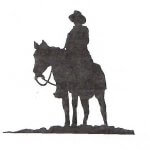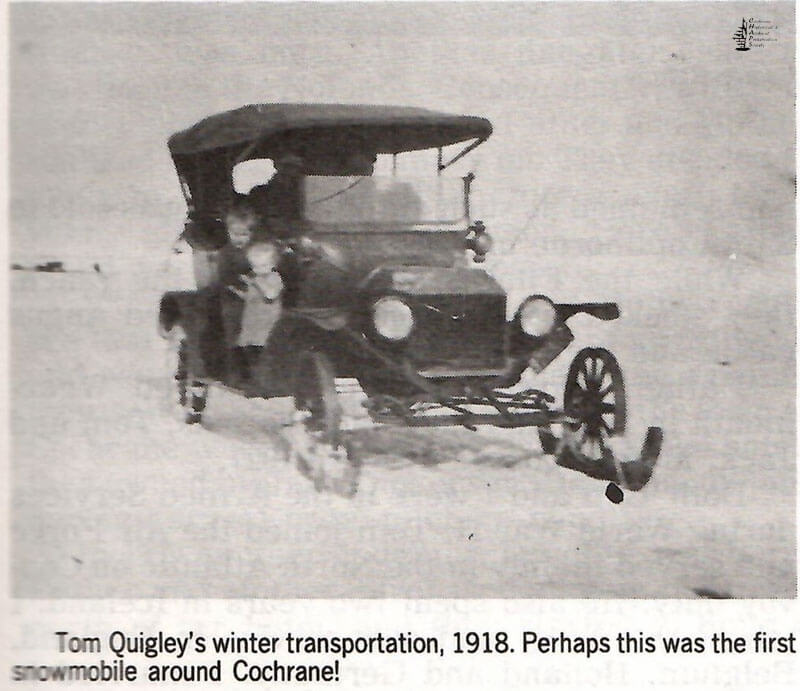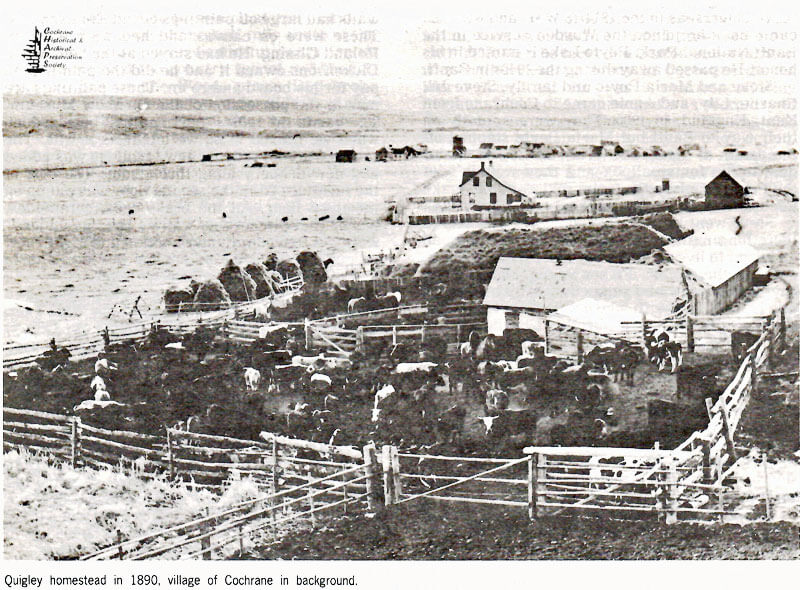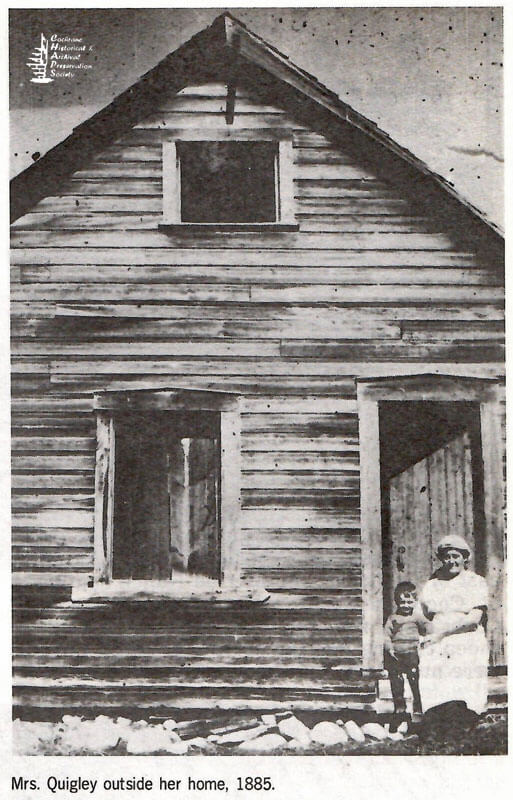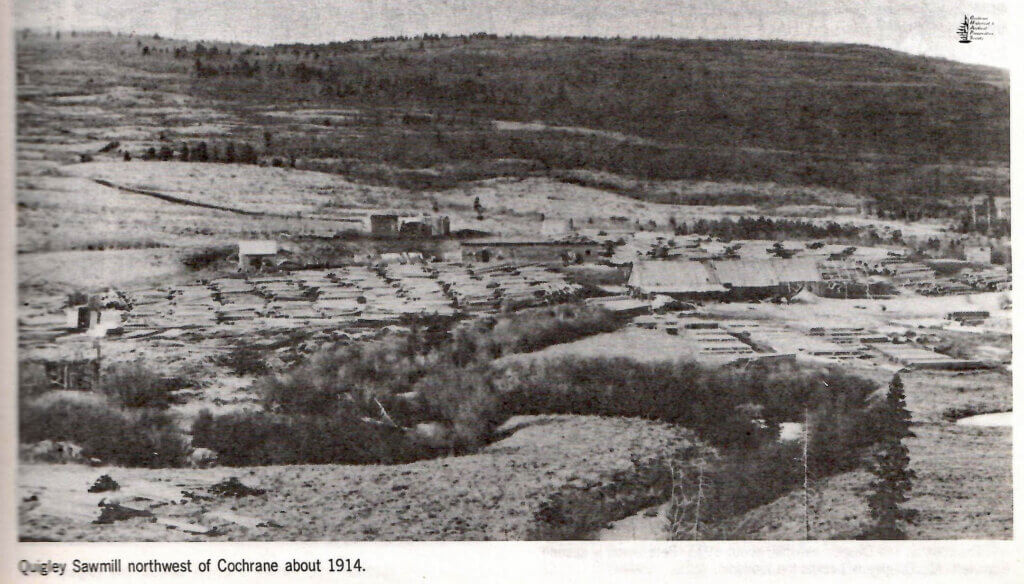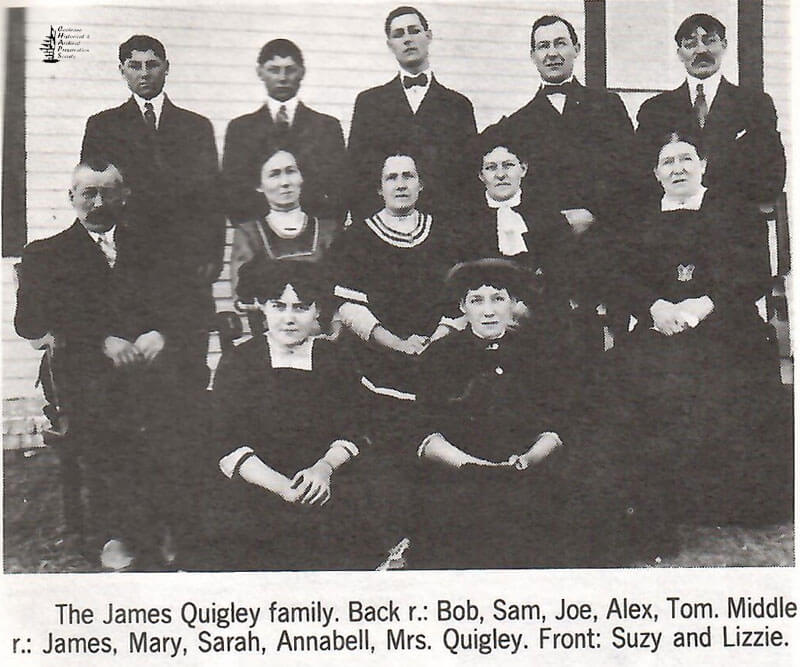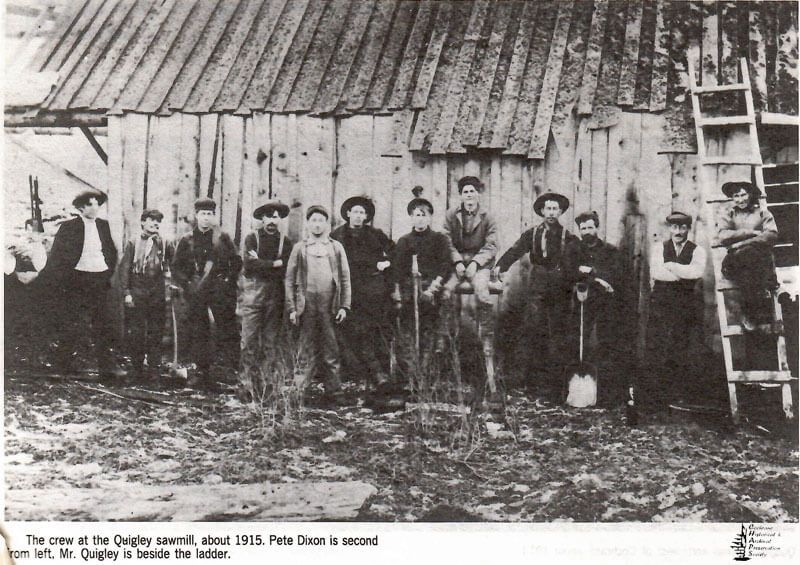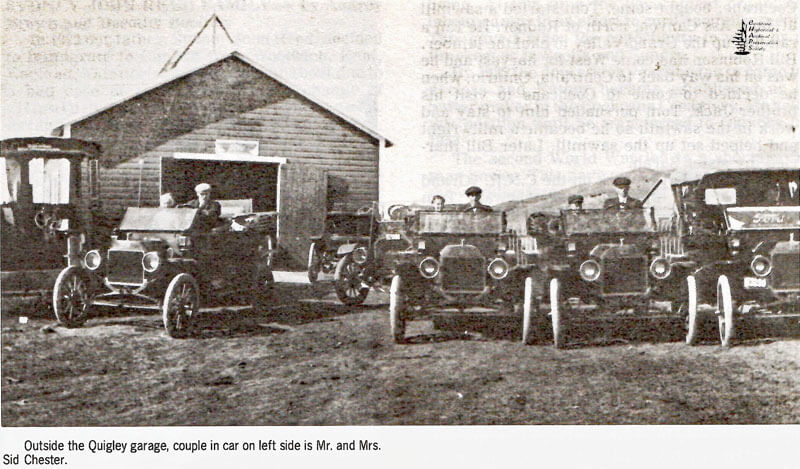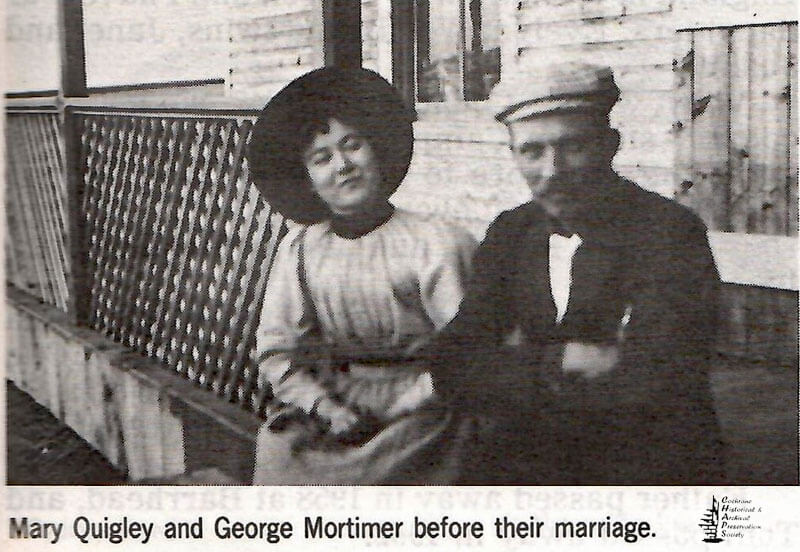by Alex Quigley, aged 85 years pg 260 Big Hill Country 1977
James Quigley, my father, was born in Old Monkland, Scotland, and when a child moved to the Parish of Bothwell. Mother, Annie Lawson, was born in Kilsyth, Sterlingshire, Scotland, and also moved to Bothwell, where she met Dad and where they were married in 1877.
Dad and his three brothers were all miners. They were following a coal seam three miles under the ocean when a big explosion flooded the mine. Dad was not working that day, but Mother lost a brother and his two sons. Dad and Mother were determined not to let their sons be coal miners, so Dad took Tom, aged four years, and sailed for Canada. He settled in Westville, Nova Scotia, and Mother, my brother James and
my sister Mary came later. Here, Sarah and Sam were born and Dad worked in the mines with his three brothers, Tom, Joe and Sam. There is a monument in Nova Scotia honoring Sam and Joe for their excellent service in the mining industry.
In 1884 Dad moved his family to Lethbridge, then known as Galt, North West Territories, and in 1885 came to Cochrane. He built a home for his family on land in the east end of the Village. Annabelle, myself, Joe, Bob, Susan, Lizzie, Johnny and George were all born here.
Our brother Jim was sixteen years old and he wanted to leave home and go to work on the railroad. John Pedeprat, brother of Charlie, went to Golden, British Columbia, to build some cabins so Jim went with him. Jim got a job braking on a logging train there. Tom went and brought him back but he left again in January 1902. We got word Jim was killed at Nelson, British Columbia, he had slipped on the hard snow and fallen under a train. Johnny, aged two, died in 1902 and George died in 1903 at the age of three. There was no cemetery in Cochrane so the boys were buried near our homestead. A number of the Hewitt children were buried there too. Dad persuaded Pete Collins to sell some of his land on the hill north of the village of Cochrane and the present cemetery site was established. The bodies that were laid to rest on our homestead were moved up to the cemetery on the hill.
The Hillcrest mine west of Lethbridge was getting ready to open up, and work being very scarce around Cochrane at the time, Dad went there to work in the mine.
Another mine disaster occurred; Jim Quigley, a nephew of Dad’s, was killed.
Dad came back home and took a job to supply three sheep ranchers in the area with groceries, mail, and sheep dip. These ranchers were: one east of Cochrane, the Merino Ranch southwest of Cochrane, and a sheep ranch north of Cochrane. I well remember the great flocks of sheep coming into the corrals at night. Coyotes were numerous and sheep losses were heavy at
times. At shearing time they would put the wool in big sacks and these were loaded in hayracks and taken to Cochrane to be loaded on the train.
Dad worked very hard and saved enough money to buy 26 acres of land from the C.P.R. There was a hill on this land and a good spring was flowing from it so Dad piped water from it into our house. We were the first family to have water piped into the house. Dad and Mr. Bruce got the first school started in Cochrane; there were enough children with the Bruce family and our family to open one.
Our brother Tom was a big lad and very handy at building things. He built a wagon from old brake wheels, thrown away off the boxcars. He bought an old horse and drove around gathering up buffalo bones for the sugar refineries. They used these bones for bleaching the sugar. Tom piled the bones along the railway track and they were loaded into boxcars when there were enough to ship. We kids had lots of fun playing on the big piles of bones.
With Dad’s savings and Tom’s earnings they bought two cows, another horse and a real wagon. The wagon was bought at T. Eaton’s. Sarah and Mary learned to milk and to make butter and it was Sam’s job to look after the calves. Tom got a job planning and plowing fireguard for the C.P.R. from Cochrane to Glenbow. He had to plow up around the big
coulee east of town and north of the railway line. This coulee is on the south end of, and below the present sanitary disposal grounds. He did the sidehills with a sulky plow. At that time a road was getting underway from Calgary. Dad got a job on the C.P.R. as a section foreman working the line seven miles west of town.
By this time the town of Mitford was going down. The sawmill and brickyard had folded up and all the English help had left the Tom Cochranes. Dad bought a big English grand piano with a flat top from Lady Adela Cochrane and Tom hauled it from Mitford to our place. It was too big to go through the door so they had to tear off some of the front of the house to get it in. In 1889 Charlie Pedeprat and his brother John built a new house for Dad and Mother.
By this time I was ready to go to work and got a job at Horse Creek helping to get rail ties with my brother Tom. He now owned a new team and had purchased a new set of harnesses from Fisher’s store. By now we had a number of horses and cattle. One old horse was a pet and we called it Borgy. It would let five of us on it and often five of us did get on and ride him around. Dad finally sold all the horses except Borgy. Some of the horses were sold to a man at Ashcroft, British Columbia, for bush work, and Dan Foster who was in the dray business in
Cochrane, bought some. Tom started a sawmill at Jack Ass Canyon, north of Radnor. He ran a rail line up the Grand Valley to haul the lumber. Bill Robinson had come West for harvest and he was on his way back to Centralia, Ontario, when he decided to come to Cochrane to visit his brother Jack. Tom persuaded him to stay and work in the sawmill so he became a millwright and helped set up the sawmill. Later Bill mar- ried my sister Sarah.
At 21 Sam left to work on the C.N.R. (Grand Trunk at that time) in Saskatchewan. Tom married Ethel Bassett and built his own home in the east end of town. They had five children. His wife died in 1909; Mother took Gordon, Tom’s youngest boy, and raised him, and Mr. and Mrs. Foster raised Ronald. I left in 1898 to work on the railroad in Saskatchewan. My sister Mary married George Mortimer, a dray man in Cochrane. Annabell married Alex MacKay and they lived at the Merino Ranch for sometime. Lizzie married Bert Sibbald of Cochrane. Bob and Joe left home and went to work in Banff and Lake Louise for Brewsters and later for the C.P.R. Dad had to have help on the ranch so he hired a chap by the name of Dave Van Ambler.
Jim Hewitt, my cousin, came to Cochrane and he married Alice Howard. They started the first pool hall in Cochrane.
War broke out in 1914 and Joe, Bob, Sam and I joined up. After the war Sam and I went back railroading in Melville, Saskatchewan. Joe and Bob returned to the Rockies but in 1923 I persuaded them to come to Melville and work on the railroad. Dad sold the cattle ranch and built a new brick house across the road from our home on the 26 acres. They built the home in 1916. In later years Lizzie and Bert Sibbald lived in the house. The big house built in 1889 became a hospital and Mrs. Campbell Roberts was in charge of it. Dr. Park was the doctor and May Coatsworth was the head nurse.
Mother laid the cornerstone at the Saint Andrews United Church at Cochrane in 1910.
Dad and Mother celebrated their 50th Wedding Anniversary in 1927. Dad passed away in 1930 at the age of 73 years and Mother in 1940 at the age of 82 years.
Note: Alex Quigley, writer of this story, passed away in January 1975.
